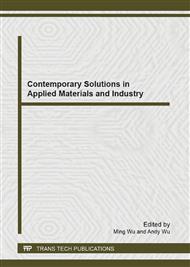p.473
p.479
p.484
p.488
p.495
p.501
p.505
p.509
p.515
The Application of Adaptive Kalman Filter in Traffic Flow Forecasting
Abstract:
The urban traffic usually has the characteristics of time-variation and nonlinearity, real-time and accurate traffic flow forecasting has become an important component of the Intelligent Transportation System (ITS). The paper gives a brief introduction of the basic theory of Kalman filter, and establishes the traffic flow forecasting model on the basis of the adaptive Kalman filter, while the traditional Kalman filtering model has the shortcomings of lower forecasting accuracy and easily running into filtering divergence. The Sage&Husa adaptive filtering algorithm will appropriately estimate and correct the unknown or uncertain noise covariance, so as to improve the dynamic characteristics of the model. The simulation results demonstrate that the adaptive Kalman filtering forecasting model has stronger tracking capability and higher forecasting precision, which is applicable to the traffic flow forecasting.
Info:
Periodical:
Pages:
495-500
Citation:
Online since:
April 2013
Authors:
Price:
Сopyright:
© 2013 Trans Tech Publications Ltd. All Rights Reserved
Share:
Citation:


